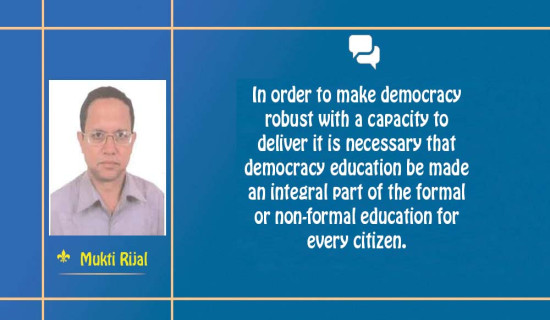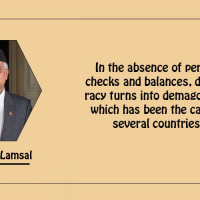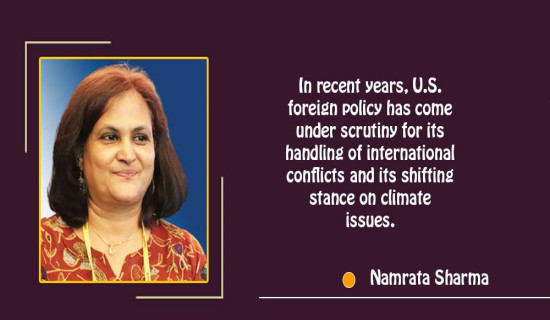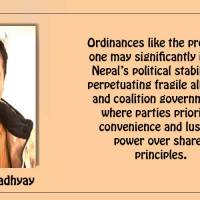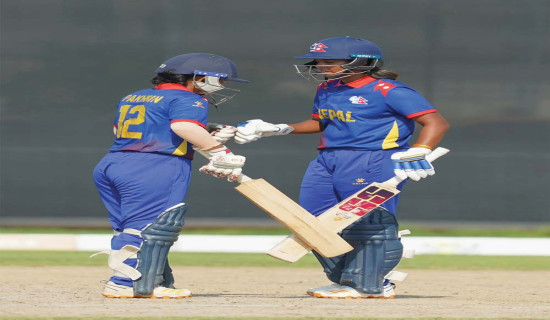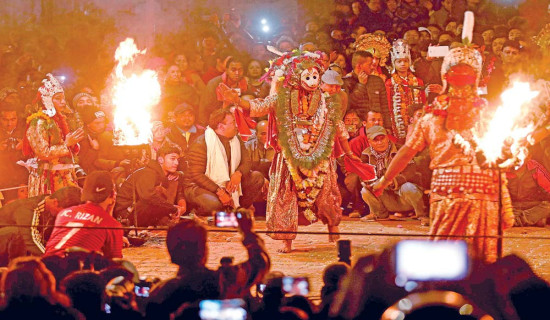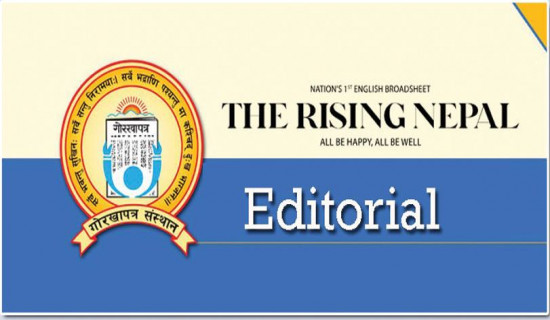- Thursday, 7 November 2024
Turmoil In Middle East Shows No Sign Of De-escalation
Following the September 11, 2001 terrorist attacks on its landmarks, the United States launched the Global War on Terror (GWOT). Many of the terrorists were believed to have been indoctrinated and trained in Afghanistan. In October 2001, president George W. Bush ordered military operations in Afghanistan with the objective "to disrupt the use of Afghanistan as a terrorist base of operations and to attack the military capability of the Taliban regime.” On January 29, 2002 in a State of the Union Address, President described Iran, Iraq and North Korea as an “axis of evil,” and said “the US will do what is necessary to protect itself and its allies.”
Iranian and Arab’s media began coining the phrase “axis of resistance,” to describe an extensive network of Shia militant proxies and allies-including Hamas, Hezbollah and Houthis- spanning across Iraq, Lebanon, Syria, Yemen, and beyond. They vowed this network is against “Great Satan” (America) and “Little Satan” (Israel). While not all members of the group share Iran’s religious ideology, they are united by their common goals of resisting Western influence and confronting Israel.
Deep-seated hostility
Iran's theocratic leadership harbours deep-seated hostility towards Israel, openly advocating for the country's total eradication. According to The Economist (November 15, 2023), the axis has long been coordinated by Iran’s Quds Force- an arm of the Islamic Revolutionary Guard Corps (IRGC), established by Ayatollah Ruhollah Khomeini as a paramilitary force. Early 1960s, Khomeini demonised Jews, calling them “impure creatures.” His successor as Supreme Leader, Ayatollah Khamenei said, “Israel is malignant cancer gland that needs to be uprooted.”
Threats to peace and security are nowhere more acute than in Europe and the Middle East, following Russia’s invasion of Ukraine on February 24, 2022 and October 7, 2023 Hamas attacks on Israel. Russia violated international law and the principles and purposes of the United Nations Charter, whereas October 7 terrorist attacks marked the worst tragedy for the state of Israel and the Jewish people since the Holocaust. Some 1,200 people were murdered in Israel, and approximately 250 people were taken hostage on a single day, including Nepali citizens.
In 1979, when Ayatollah Ruhollah Khomeini landed in Tehran, he informed people, “from now on, it is I who will name the government.” Khomeini’s concept of “Velayat-e-faqih” or guardianship of the religious jurist, is embedded in Shia belief that the most learned religious man should have political and religious control. Khomeini became supreme leader-a position enshrined in the constitution. Leaders after Khomeini were selected by an Assembly of Experts made up of senior clerics.
Immediately after Khomeini’s installation in Tehran as supreme leader, he gave a call for Islamic revolution in Arab countries. Iraq’s dictator Saddam Hussein saw the creation of a Shia Islamic Republic next door both as a threat or opportunity. He tried to grab land in the east bank of the Shatt-al-Waterway and the oil producing, ethnically Arab province of Khuzestan. Saddam expected a quick victory, but it was disastrous resulting in more than one million deaths. Iran pushed hard into Iraq in a bid to capture Shia strongholds Karbala, without success. Tired of the war, both Iran and Iraq accepted UN-brokered ceasefire after eight years, withdrawing to their pre-war positions.
Iran’s ethnic groups like Arabs, Azeris, Baluchs, and Kurds have cross-border affiliations across the Middle East. Iran has maintained ethnic diversity since the time of Persian Empire. Iran’s Khuzestan houses significant Arab population. This is where Iran’s vital oil resources are located and nearly a quarter of its GDP comes from there. Iran fears that should neighbouring states support separatist movements, it would significantly weaken state, crippling it to play any role it has been currently playing. Iran’s adversaries see best chances to exploit its internal ethnic and religious divisions.
Iran claims it is doing God’s work. Its proxy actors in the region - the Houthis in the Red Sea, the Hamas in Gaza, and Hezbollah in Southern Lebanon play in the worlds of religion, politics and terrorism. These groups work in tandem with Tehran to undermine American and Israeli interests. Iran backed Yemen’s Houthi rebels have also struck key oil installations inside Saudi Arabia with drones and missiles. Iran and Saudi Arabia are historic rivals in the region. They together control nearly a third of the world’s oil resources and a fifth of its natural gas. Karim Sadjadpour writes in Foreign Affairs, “Iran’s backed proxies and militias dominate four failing Arab states- Iraq, Lebanon, Syria and Yemen as well as Gaza.” Tehran wields an “outsize impact” on numerous global security issues, including nuclear proliferation.
In early 2023, China brokered a peace deal between Iran and Saudi Arabia that restored diplomatic ties severed in 2016. Analysts view this as China presenting itself as global power and its “bold foray into the Middle East’s turbulent rivalries.” It was also seen as signalling a “wave of reconciliation” and Saudi Arabia’s evolving foreign policy. China avoids putting conditions and opposes all forms of power politics, and interference in other countries’ internal affairs. Under the peace deal, Riyadh expects Tehran to curb support for anti-Saudi Shia militias while Tehran hopes that Riyadh-backed satellite Iran International to stop its coverage of women rights in Iran, and deter it from furthering relations with its primary rival Israel.
Military coordination
Unlike Iran, Saudi Arabia is against erasing Israel from the map, and was a part of the Abraham Accords that reportedly initiated close intelligence and military coordination between Israel, Saudi Arabia and the United Arab Emirates. Hamas-Israel conflict into its second year, there are no signs of de-escalation. The risks of its spreading looms as Iran launched missile attacks against Israel prompting their retaliatory strikes.
In recent months, Israel delivered big blows against Iran’s network of axis of resistance which included targeted killings of Hamas leaders Ismail Haniyeh in Tehran, Gaza-based Hamas leader Yahya Sinwar- widely considered the architect of October 7 attacks, Hezbollah leader Hassan Nasrallah in Lebanon, and Iranian nuclear scientist Mohsen Fakhrizadeh. The assassination of Iran’s top military commander General Qassem Soleimani in January 2020, in Iraq continues to fuel region’s tensions. The plane crash on May 20, 2024, near the Azerbaijan border, claimed the lives of Iranian President Ebrahim Raisi, the foreign minister, and other officials. While poor weather was cited as the cause, suspicions linger, reflecting Tehran’s years of deep-seated internal dissent and mistrust within its corridors of power.
(The author is Nepal’s former ambassador to the United Nations.)



